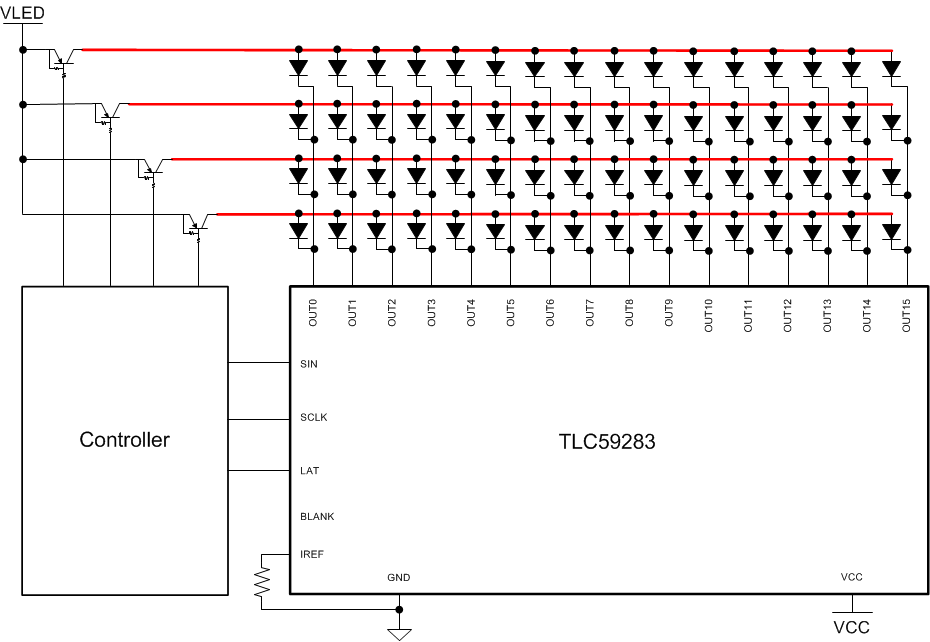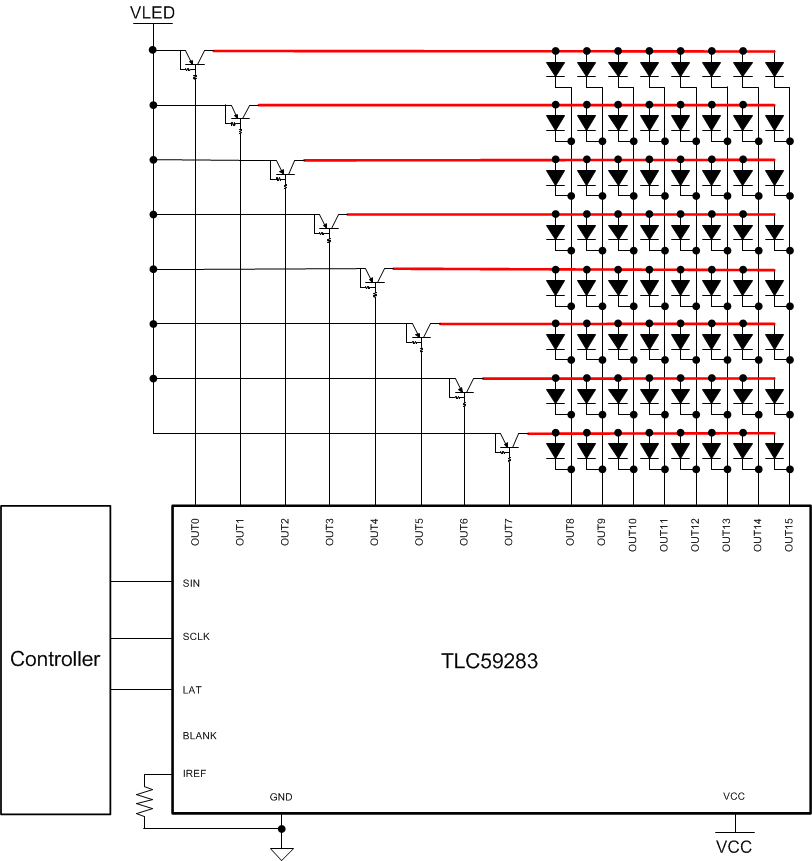SBVS199C June 2012 – January 2024 TLC59283
PRODUCTION DATA
- 1
- 1 Features
- 2 Applications
- 3 Description
- 4 Pin Configurations
- 5 Specifications
- 6 Parameter Measurement Information
- 7 Detailed Description
- 8 Register Configuration
- 9 Application and Implementation
- 10Device and Documentation Support
- 11Revision History
- 12Mechanical, Packaging, and Orderable Information
Package Options
Mechanical Data (Package|Pins)
Thermal pad, mechanical data (Package|Pins)
Orderable Information
9.2.2 Detailed Design Procedure
This section show how to use the TLC59283 to drive the LED matrix using time-multiplexing topology. To form a time-multiplexing topology, it is necessary to add external switching MOSFETs or transistors. If there is enough I/Os in the system to control the transistors, a block diagram like Figure 8-1 can be used to drive 64 LEDs.
 Figure 9-1 Time-multiplexing Circuit Using TLC59283 and Enough I/Os.
Figure 9-1 Time-multiplexing Circuit Using TLC59283 and Enough I/Os.  Figure 9-2 Time-multiplexing Circuit Using TLC59283 and Less I/Os.
Figure 9-2 Time-multiplexing Circuit Using TLC59283 and Less I/Os.